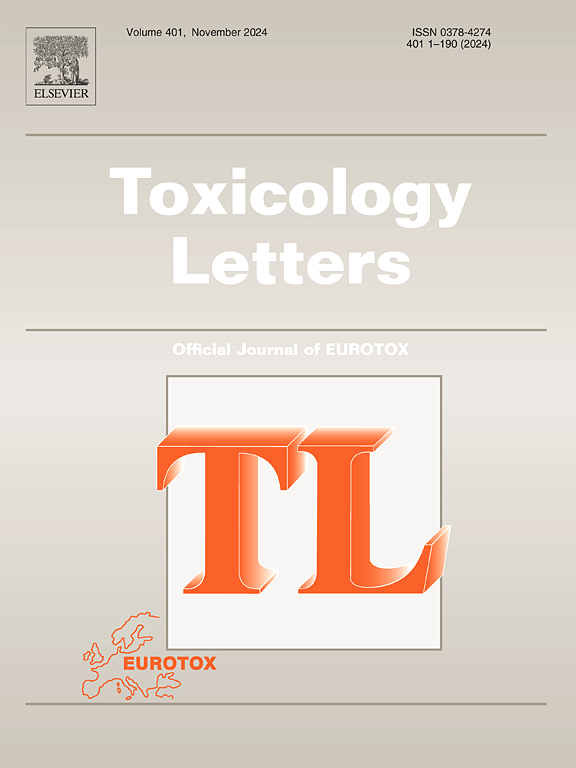Revolutionizing toxicity predictions of diverse chemicals to protect human health: Comparative QSAR and q-RASAR modeling
IF 2.9
3区 医学
Q2 TOXICOLOGY
引用次数: 0
Abstract
The extensive application of chemicals in the form of pesticides, cosmetics, drugs, etc., has been shown to adversely affect humans and the environment, mainly through food product residues and environmental exposure. Exposure to diverse chemicals through various routes including ingestion, inhalation, and dermal contact is associated with multiple health risks including endocrine disruption, cancer, and neurotoxicity. This study presents an advanced computational approach using quantitative structure-activity relationship (QSAR) and quantitative read-across structure-activity relationship (q-RASAR) models to predict the acute toxicity of diverse chemicals in humans, with the negative logarithm of the lowest published toxic dose (pTDLo) endpoint. We developed the first-ever predictive toxicity models combining QSAR and similarity-based read-across techniques to enhance accuracy, utilizing the TOXRIC database. The q-RASAR model outperformed traditional QSAR approaches, achieving robust statistical performance with internal validation metrics of R2 = 0.710, Q2 = 0.658, and external validation metrics of Q²F1 = 0.812, Q²F2 = 0.812, Δr2m(test) = 0.087 and = 0.741. The model identified the key structural features, such as high coefficients and variations in similarity values among closely related compounds, the presence of carbon-carbon bonds at specific topological distances (5 and 8), and higher minimum E-state indices, all of which are linked to increased toxicity toward humans. The PLS-based q-RASAR model was further utilized to screen pesticides obtained from the pesticide properties database (PPDB) and 3660 investigational drugs from the DrugBank database for potential toxicants in humans, providing a tool to identify hazardous substances and mitigate risks. The developed models are instrumental in filling eco-toxicological data gaps and facilitating the development of novel, safe, and eco-friendly chemicals.
革命性的各种化学品的毒性预测,以保护人类健康:比较QSAR和q-RASAR建模
化学品以杀虫剂、化妆品、药物等形式的广泛应用已被证明对人类和环境产生不利影响,主要是通过食品残留和环境暴露。通过摄入、吸入和皮肤接触等各种途径接触各种化学物质与多种健康风险相关,包括内分泌紊乱、癌症和神经毒性。本研究提出了一种先进的计算方法,使用定量构效关系(QSAR)和定量跨构效关系(q-RASAR)模型来预测不同化学物质对人体的急性毒性,最低公布毒性剂量(pTDLo)终点为负对数。利用TOXRIC数据库,我们开发了首个结合QSAR和基于相似性的跨读技术的预测毒性模型,以提高准确性。Q - rasar模型的统计性能优于传统的QSAR方法,内部验证指标R2 = 0.710,Q2 = 0.658,外部验证指标Q²F1 = 0.812,Q²F2 = 0.812,Δr2m(test) = 0.087,rm(test)2′s = 0.741。该模型确定了关键的结构特征,如高系数和密切相关化合物之间相似值的变化,特定拓扑距离(5和8)上碳-碳键的存在,以及更高的最小e态指数,所有这些都与对人类的毒性增加有关。基于pls的q-RASAR模型进一步用于筛选农药属性数据库(PPDB)中获得的农药和药物银行数据库中3660种研究药物对人体的潜在毒性,为识别有害物质和降低风险提供了工具。开发的模型有助于填补生态毒理学数据空白,促进新型、安全和环保化学品的开发。
本文章由计算机程序翻译,如有差异,请以英文原文为准。
求助全文
约1分钟内获得全文
求助全文
来源期刊

Toxicology letters
医学-毒理学
CiteScore
7.10
自引率
2.90%
发文量
897
审稿时长
33 days
期刊介绍:
An international journal for the rapid publication of novel reports on a range of aspects of toxicology, especially mechanisms of toxicity.
 求助内容:
求助内容: 应助结果提醒方式:
应助结果提醒方式:


